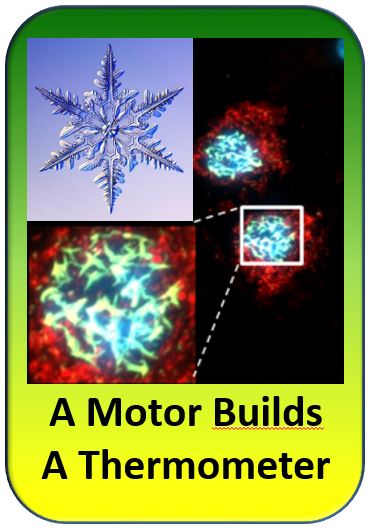2018_02 A Wrong-Way Kinesin as Thermometer?
Why we work on wrong-way kinesins
Kinesins are so called molecular motors that transport cargoes along microtubules. Similar to a one-way road, microtubules are endowed with directionality, because one end is growing, while the other shrinks. Kinesin motors usually move towards the growing end, while so called dynein motors drive in the opposite direction. While animals use such dynein motors (for humans they are, for instance, involved in left-right asymmetry during development) , these motors have been lost during the transition from algae to land plants – the last plant, still using dynein motors, is the living fossil Ginkgo. Simultaneously, a new group of kinesins evolved that run towards the minus end of microtubules (i.e. in the sense as usually dyneins do). This is peculiar and arose our curiosity. Since several years we have tried to understand, what these "wrong-way kinesins“ do and still we are in a phase, where we discover surprises.
What did we discover?
For our model plant rice, we had found a new member of this mysterious kinesin family and first wanted to know, where in the cell this motor is working. A rice mutant, where this kinesin was out of order, dies already in the embryonic stage. Thus, we already knew that this protein seems to be important. We generated tobacco cells, where this kinesin is formed in fusion with a fluorescent protein from jellyfish, and this allowed us to see, how this kinesin during cell division first moves to the spindle poles and from there moves back to the cell center, once the daughter nuclei have separated. This protein is here participating in the phragmoplast, a kind of microtubule circle that forms the new cell wall separating the newly formed daughter cells. In cells that have stopped dividing, our kinesin motors was organised in long fibres underneath the cell wall, where it was bound to the so called cortical microtubules. These microtubules are only found in plants and control the direction of cellulose and, thus, the mechanic properties of the cell wall. By switching the direction of these microtubules, plant cells can decide on their shape (either long and thin or short and thick). To our surprise, we found a part of the kinesins in the nucleus. This prompted the question, what the meaning of this phenomenon might be. Using a cold shock (bathing our cells in ice water), we dismantled the cortical microtubules and we observed that our released microtubule motor moved then into the nucleus, where it attached to specific sites on the chromosomes.
What does a microtubule-motor do in the nucleus?
Normally, nothing – when tubulin, the building block of microtubules, gets into touch with DNA, this will immediately induce the formation of a division spindle and induce cell division. Therefore, tubulin is strictly kept away from the DNA in cells that are not going to divide. We could find out, that our motor was recognising certain sequence motifs on the DNA and bind to them. When we used genetic engineering to increase the level of this kinesin, this changed the activation of a gene named Cold Box Factor 4, a genetic switch that, in response to cold, activates a series of freeze-protection proteins.
In other words: our microtubule motor is part of a thermometer – when microtubules shrink in response to low temperature, this kinesin is released and moves into the nucleus, where it binds the switching promoter sequence of Cold Box Factor 4, which in turn activates other genes that help to adapt to cold stress.
A microtubule motor as thermometer – this was quite a surprise, which we want to understand more deeply in future research work.
Publication
135. Xu X, Walter W, Liu Q, Machens I, Nick P (2018) A rice class-XIV kinesin enters the nucleus in response to cold. Nature Scientific Reports 8, 3588. – pdf

